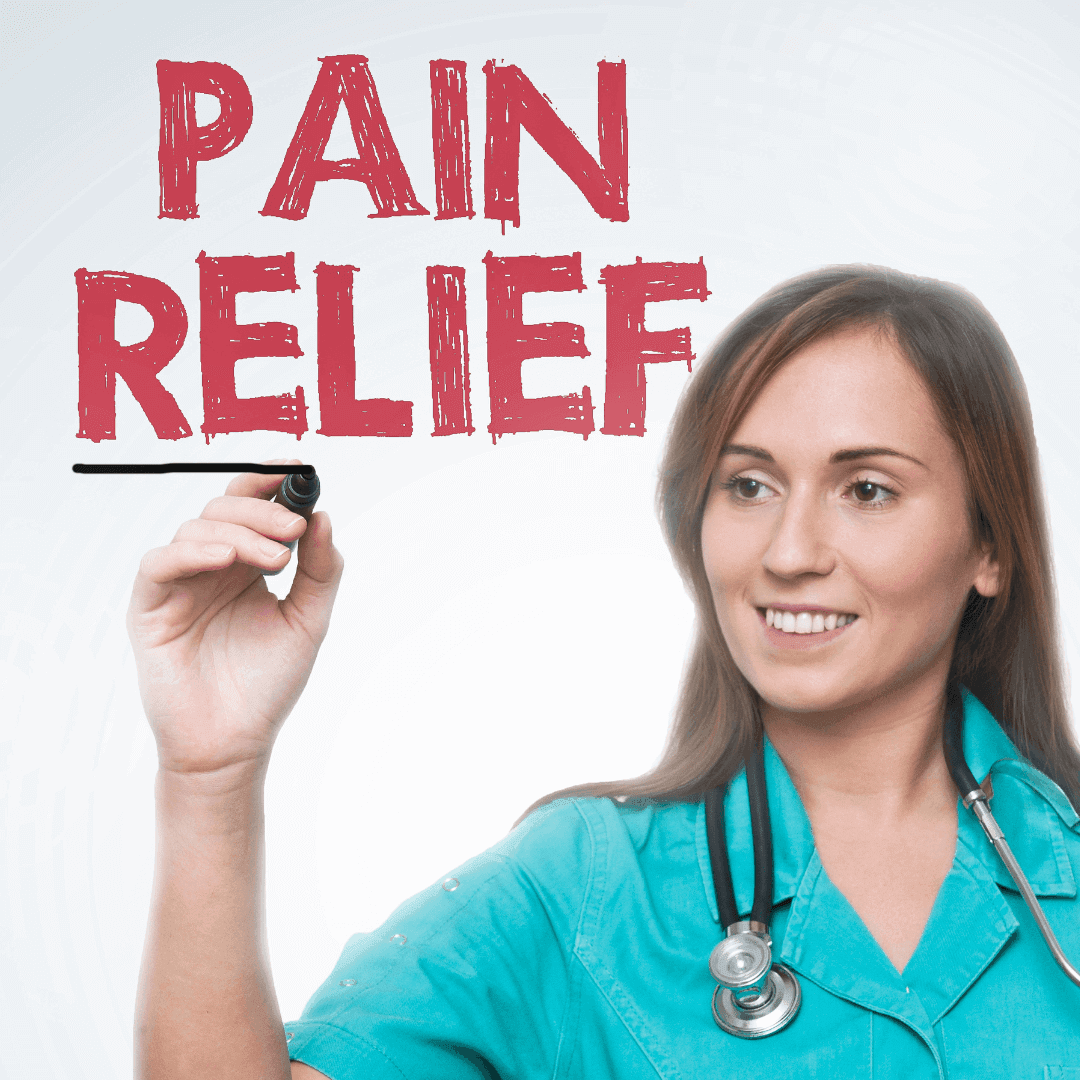
Do you experience the ill effects of aches and pains? Is the aggravation and uneasiness so debilitating that you wish the pain would stop? You may be taking medication to ease the pain, but what happens when the medication wears off? The pain and agony may return. Instead, think long-term. Many natural remedies will provide long-term relief, especially with continued use. Before discontinuing a prescription medication, please follow the advice of your healthcare professional.
What is the definition of pain?
Clinical specialists say physical pain is associated with the body's natural reactions to disease, injury or joint inflammation. Pain is an individual experience that's different for every person. Medical professionals can help patients suffering from acute, chronic, and progressive pain by eliminating the unpleasant experience.
Not all patients will take medications and other interventions given by medical specialists because they don't want to experience the side effects of medications. People who are fed up with regular prescriptions to manage pain prefer alternative natural remedies for pain relief.What are some of the effective ways to relieve pain naturally?
There are a variety of natural remedies for pain relief. However, here are the top ten natural pain relief remedies you can choose depending on the nature of the pain and your comfort level with the treatment.
1) Apply Hot and Cold Temperatures

Nothing works more rapidly than using hot and cold temperatures to the affected area when you are in pain. The idea behind the hot and cold temperature variation is that applying intensity to an impacted area on the body can help the muscles and other connective tissue unwind and release tension. This additionally decreases the blood flow to the area as your body doesn't have to warm that area with excessive blood circulation.
There are various ways you can apply heat or cooling effect to a specific area on your body for pain relief:
Take a warm bath or shower.
You will feel instant relief by soaking in a warm bath or taking a hot shower. This is especially helpful when your joints are often stiffest and most achy first thing in the morning.
Warm body adhesive heat pads.
Heat pads are perfect when you need to maintain heat for the temporary relief of muscular aches & pains, joint stiffness and backache.
Warm or cold wheat bags.
There are wide varieties of wheat bags that can be heated to help control pain and stiffness. Wheat bags are heated in the microwave and retain heat for longer by releasing the heat slowly, giving comfort and warmth. Also, wheat bags can be placed in the freezer to use as a cooling method when required for pain relief.
The application of using regular ice packs and gel packs for cold temperatures works better to help excessive numb pain as well as to help reduce swelling around the joints, which can also lead to pain. If you don't have an ice pack, a bag of frozen peas will work just as well.
2) Massage for Pain Relief
A therapeutic massage may relieve pain by manipulating the muscles and connective tissues of the body. With direct pressure and movement of these areas, the body can relax and release painful muscles, tendons, and joints.
Today, there are several different kinds of massage, each offering various movements and techniques. However, evidence suggests that massage reduces pain and improves flexibility and range of motion. Choose a reputable massage therapist in your local area that offers the most relief, or you can teach your partner, a friend or a family member to massage the painful areas.
3) Topical Pain Relief
Topical pain relief can be quicker to reduce pain than oral medicines without being invasive. Besides, If you're not a person who likes to take pills, topical pain relief can help you get pain relief without swallowing anything. While topical pain relief is not recommended to relieve chronic pain, it is highly effective in the short-term alleviation of minor aches and pains to help your mobility. *However, always seek medical advice about managing your chronic pain.
Fast pain relief topical cream.
4) Distract Your Focus From The Pain
Diverting yourself is one of the most incredible ways to handle pain. The second you start to feel pain, your mind focuses on it. Accordingly, your attention becomes redirected to that part of the body, and you begin to disregard any remaining things in your daily life. Distracting your mind from the body pain can be challenging when dealing with chronic pain. However, here are a few techniques you can try to help distract your focus from pain with a few relaxation techniques for instant relief.Watch something you enjoy.
One of the simplest ways of distracting yourself from pain is to turn your concentration on something you enjoy. For example, you may like to watch your favourite film or your TV program.
Take deep breaths.
When we are in pain, the greater part of us inhales shallowly, yet we don't realise it. As a result, many people suffering from chronic pain do not breathe correctly, leading to increased pain. This is because when we take shallow breaths, we aren't getting as much oxygen into our bodies and circulatory system as expected. Click here to learn more about deep breathing techniques for pain relief.
5) Thought-stopping

A traditional psychological technique is thought-stopping. However, this technique is more about noticing negative thoughts and then gently redirecting your mind to a more helpful, positive one whenever you begin to feel pain.
For example, you may choose an affirmation or mantra that helps keep you feeling optimistic and focused. This will teach your brain that pain and your affirmation or mantra are associated, eventually leading your brain to not think of pain as often.
Another way of thought-stopping is to visualise things that make you feel good; the easier it can be to distract your focus from the pain. These might include the things you love like your partner, fluffy cats, smiley faces, sunsets, etc. The more you try to think of things that make you feel good, the easier it can be to distract your focus from the pain.
6) Gentle Activities
While it appears problematic to move around more when you're in pain, this is one of the best ways to help with discomfort. Use slow and gentle movements and breath awareness while walking, yoga, swimming, or stretching exercises. Your body was intended to be active, even in pain. If you feel shooting pain as you move, stop your activity and seek medical advice.No matter what kind of pain you have, there are gentle activities you can do to create a healthier body and manage pain. *First, check with your primary care physician to see what practices they would suggest.
7) Stretch Away the Pain
Our bodies were designed to move easily, but when we're sitting down a lot of the time, the muscles clench up from a lack of use. As a result, the surrounding muscles of your body's tight and aching joints are often tenser than you may realise. However, over time, you can become accustomed to having your muscles clenched up, so your body's stiffness becomes something you expect that you don't worry too much about it.
But when you have pain, that tightness and stiffness is the last thing you need to have present. So it would be best to loosen things up a bit by taking the time to stretch. Anyone can stretch anywhere, anytime; the more you do it, the more benefits you will feel.
8) Acupuncture
This ancient Chinese medical practice seeks to reduce to relieve pain by adjusting the body's common energy pathways. For this method, acupuncturists embed slender needles into the skin. The area of insertion is connected with the source of pain. However, the needles may be embedded far from the part of the body encountering pain because the energy flow is known as qi (pronounced "chee”), which connects to the acupuncture points on the body between the meridian points. Using acupuncture needles to manipulate a point or two separate points on the body can improve a person's qi and relieve the symptoms of various medical conditions, including chronic pain.
9) Physical Therapy
Physical Therapy is often one of the choices for treating pain, particularly rheumatoid arthritis because it is effective in helping patients maintain their natural range of motion through special exercises for their symptoms. Many people have found if the prescribed exercises are done regularly, it will often greatly improve their range of motion. It also helps the patient deal with muscle and joint stiffness, improves muscle strength, and reduces overall pain.
Physical therapists perform hands-on treatments for your symptoms. They also teach you special exercises to help you move and function better.
10) Add Anti-Inflammatory Foods To Your Daily Meals

Did you know that some food varieties contain antioxidants that can reduce pain and swelling related to joint inflammation? According to studies, polyphenols and antioxidants in some food varieties have high anti-inflammatory properties crucial to preventing the inflammatory response in the body. These food varieties include fresh pineapples, tart cherries, cayenne pepper, blueberries, apples, and leafy greens, to name a few.
Although including anti-inflammatory food varieties in your daily diet may not give you fast pain relief, the antioxidants in fruits and vegetables decrease damage caused by free radicals and prevent the initiation of the inflammatory response.
Conclusion
*Before trying any natural pain relief remedies mentioned in this blog post, always consult your doctor. Some of these natural pain relief remedies may even complement a regimen your doctor has already started for you. However, some natural pain relief methods may not be appropriate for you or may have serious side effects, even if they are non-pharmaceutical. In addition, factors must be considered, including medical condition and patient history, before undergoing any treatment.

